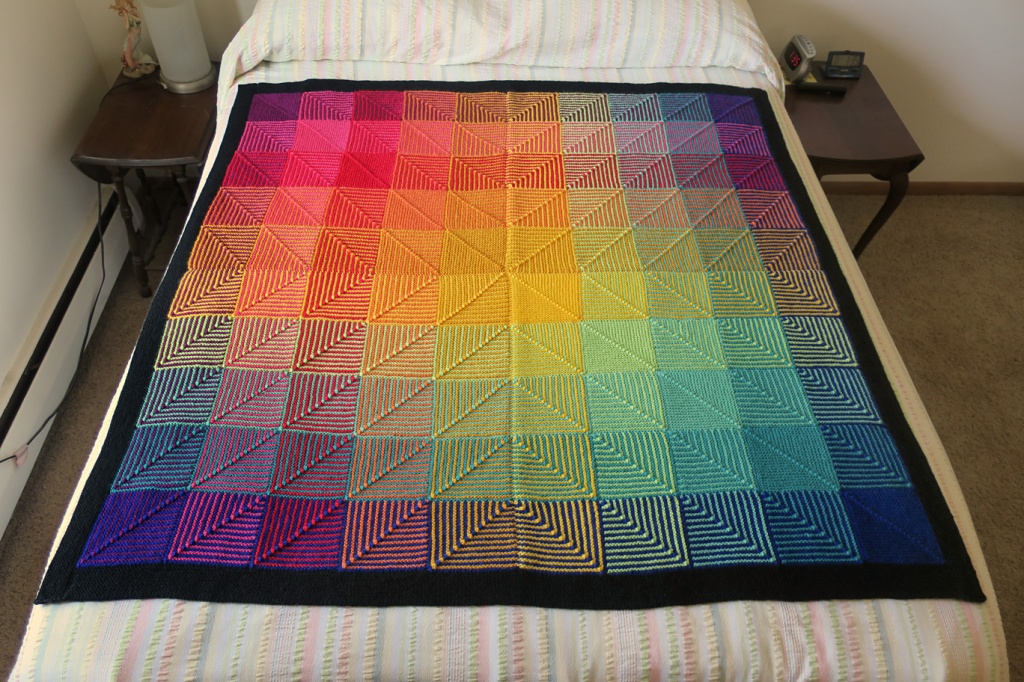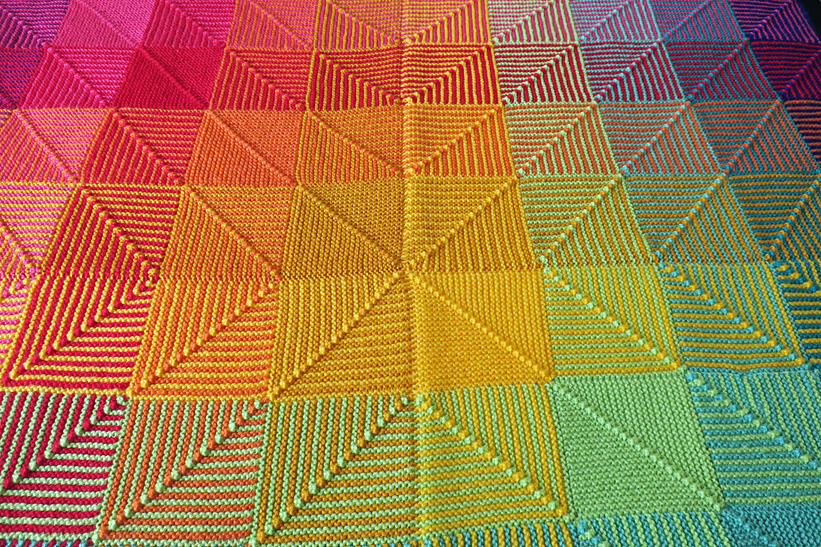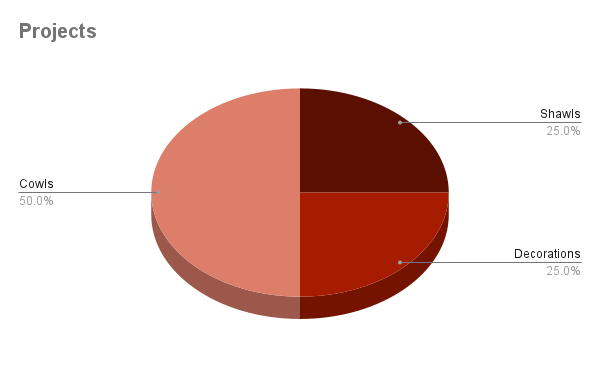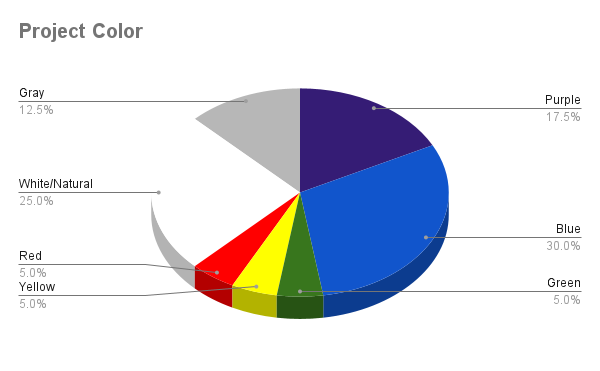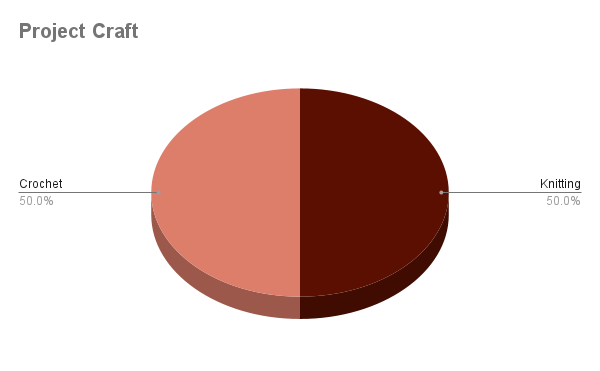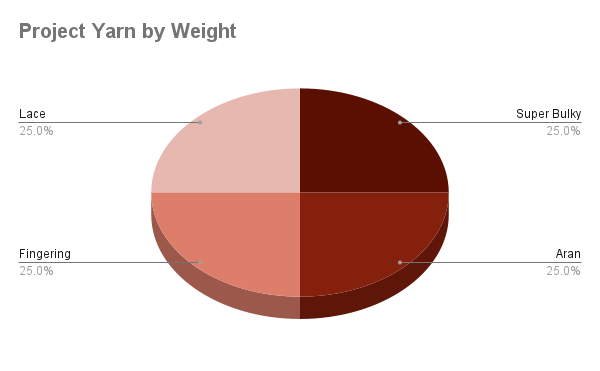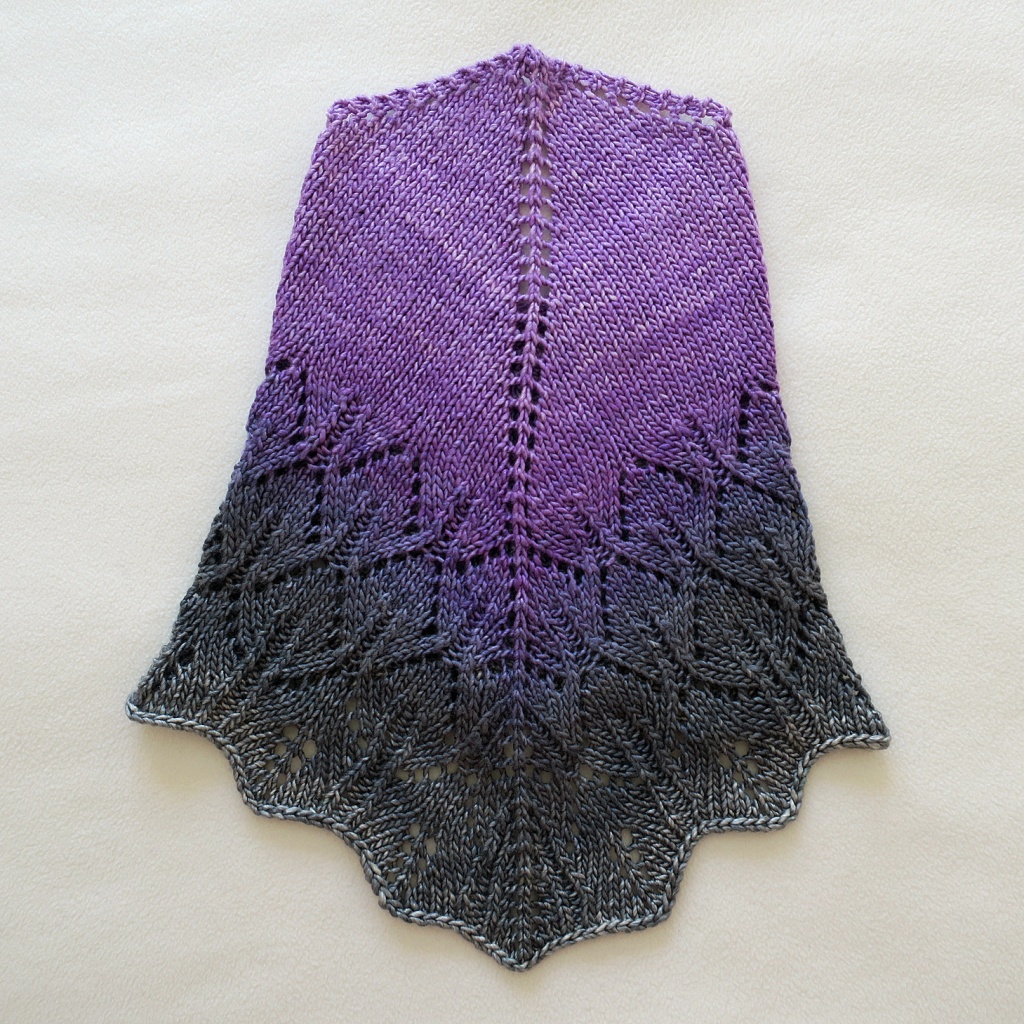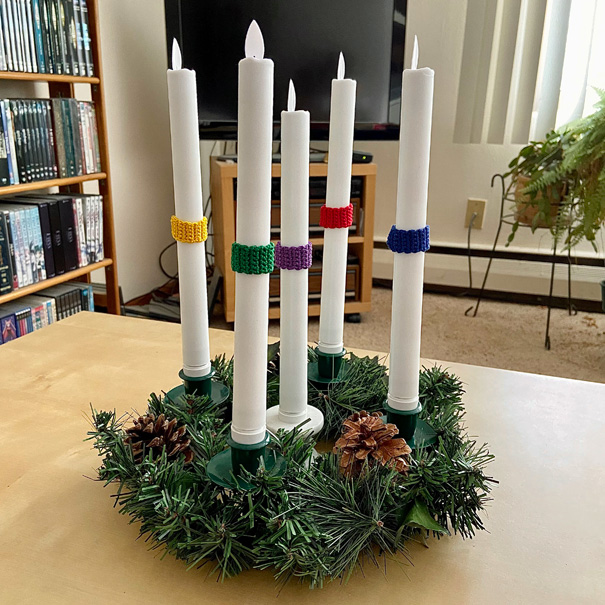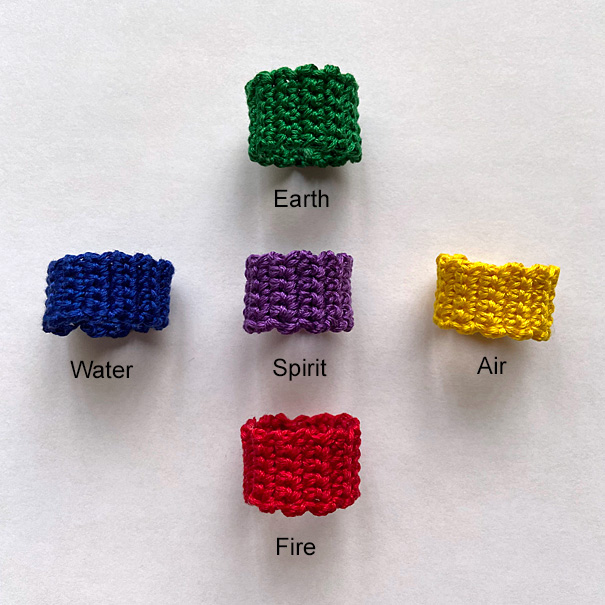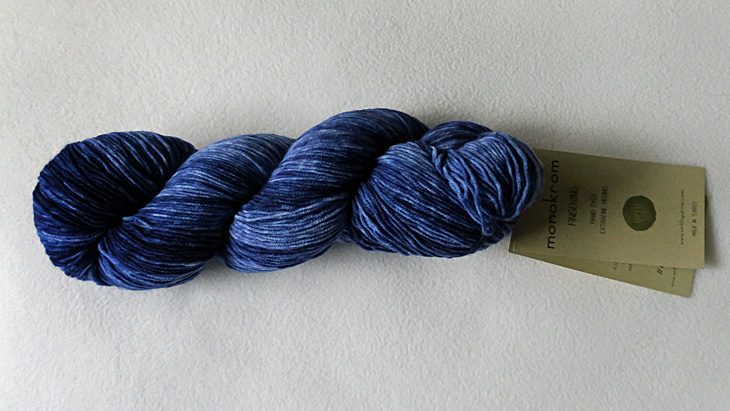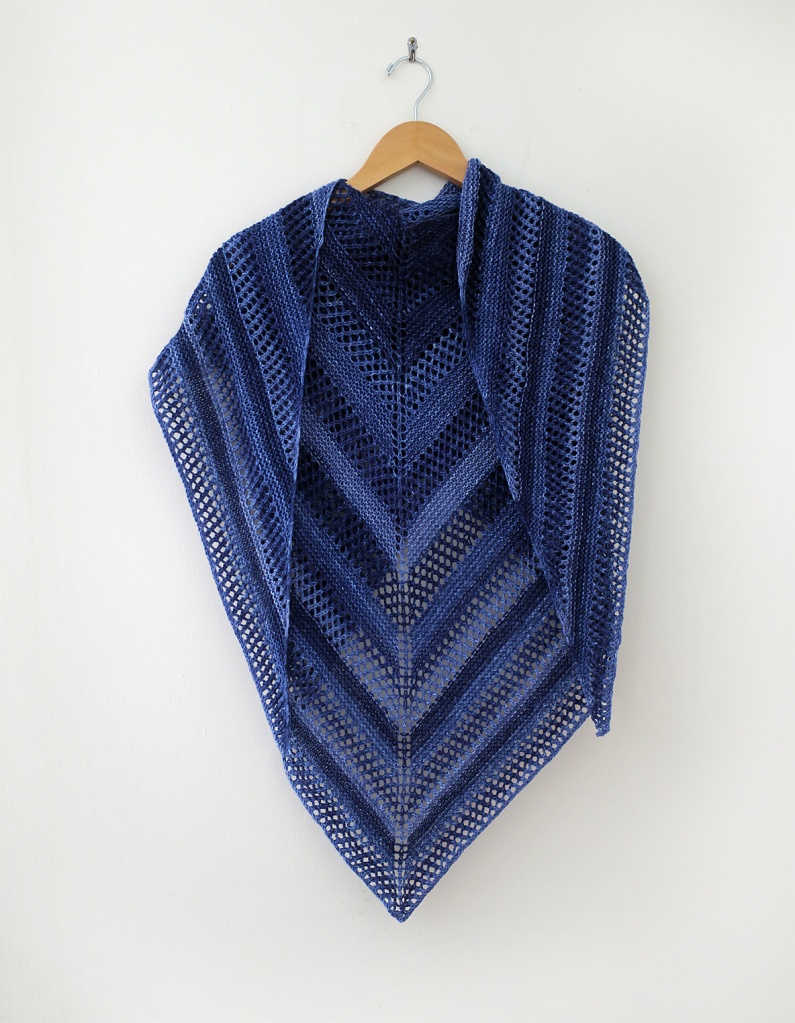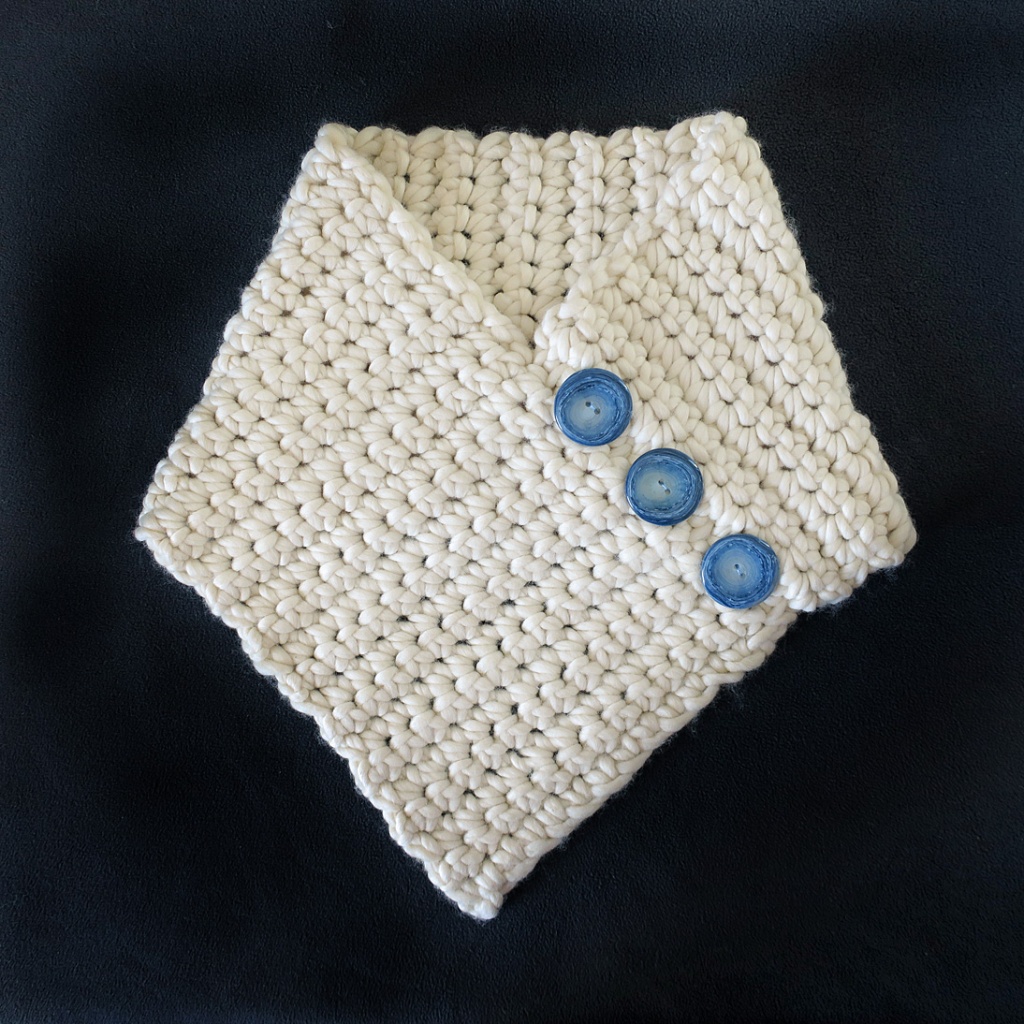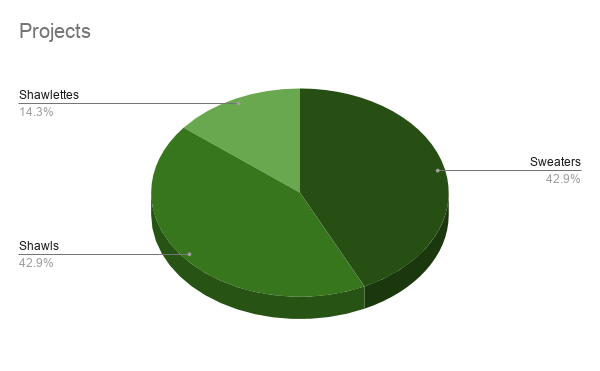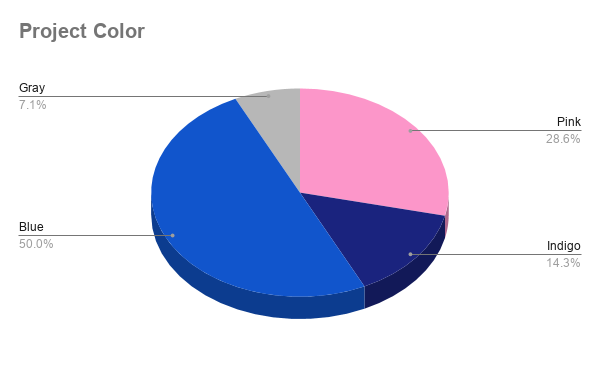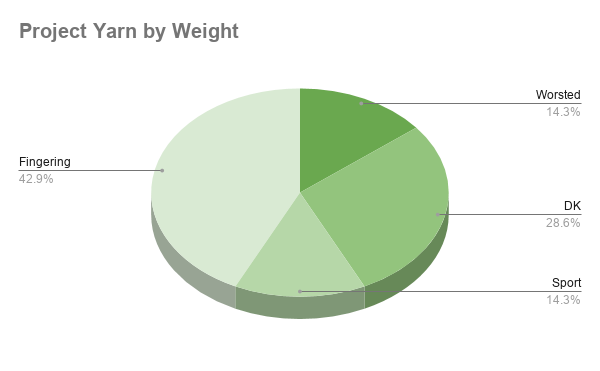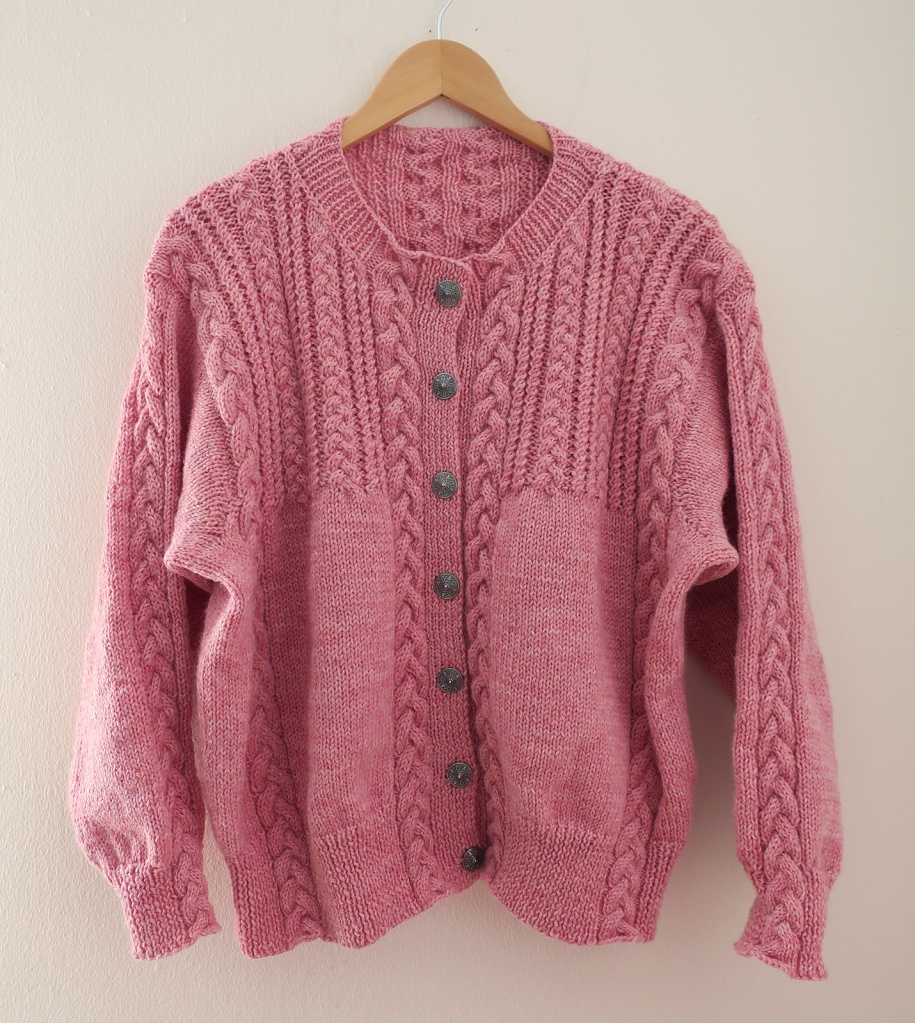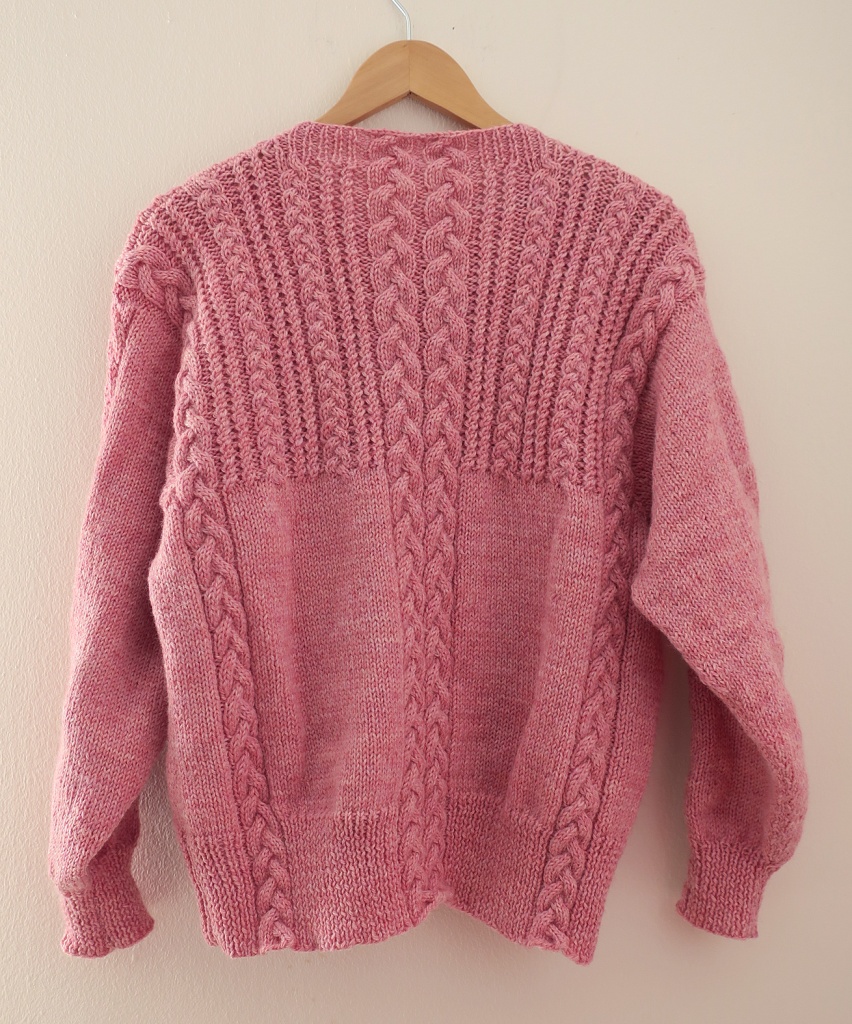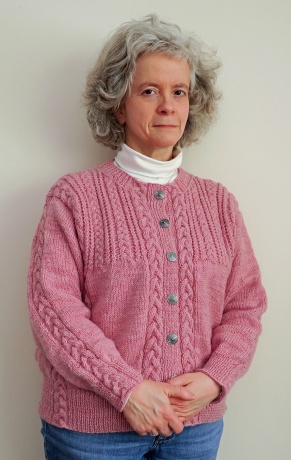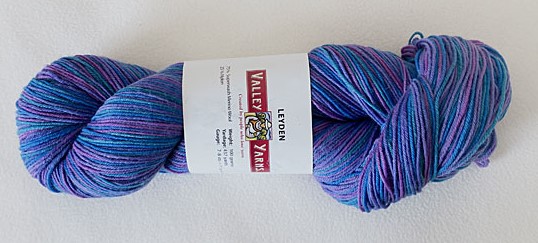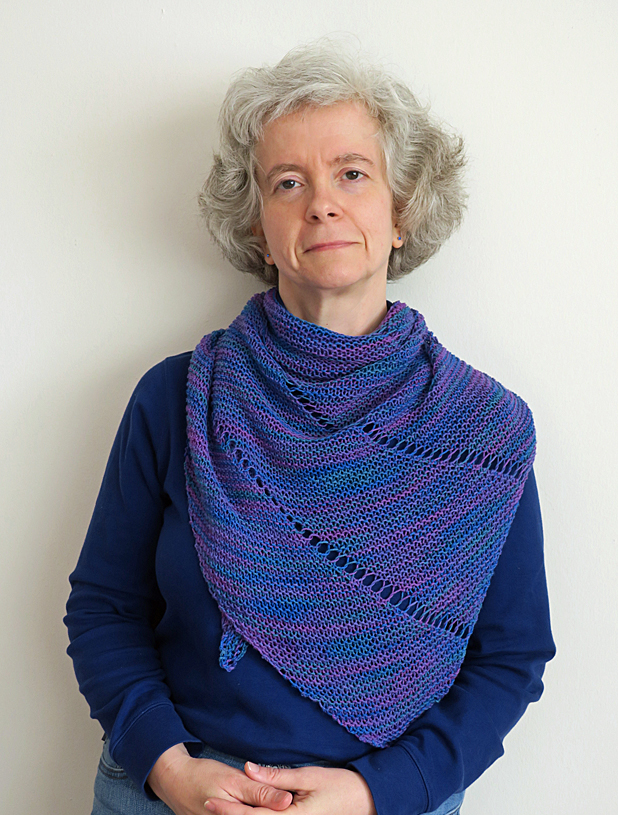I’ve made an afghan!
Okay, this is an accomplishment, and I’m proud of it, but I have successfully made afghans in the past. This latest afghan has marked a change of focus for me, though. In recent years, I’ve been putting my energies into one- and two-skein projects, mainly shawlettes and shawls. I got to try a lot of different yarns in a comparatively short amount of time, plus, instant gratification has its appeal. I still have tubs (multiple) filled with yarns that will make lovely accessories, but as it turns out, a pandemic is a great time for Very Large Projects.
The Hue Shift Afghan was first published in 2012, and I picked up a kit for it in 2014. I promptly put it in my stash and let it age, as one does. It never seemed like the right time to commit to making it until last year. My best guess as to why it finally seemed like the right time to start it is what I named in the title of this post: I like color, I especially like rainbow sequences of colors, and so I tried countering the stress of modern life with the largest rainbow project I had on hand. I don’t know as knitting this afghan made life any less stressful, but creating a project this big did leave me feeling as if I was accomplishing something. One big something, that is, rather than several small ones: this is why my project count for 2021 was comparatively low.
I confess to being persnickety about the colors. I learned about the spectrum first from science and then art classes, and the colors in the kit don’t quite match what I learned. Why was pink between purple and red? Why was there a yellow-green and two shades of blue-green, but no “true” green? And this is why there’s a Roman numeral in the project name. I wasn’t totally satisfied with the colors in the kit, but I was curious enough to knit it anyway. However, it motivated me to see if I could pick colors more to my liking, and so I got yarn to make a second bright afghan at some point.
The bright colorway isn’t the only one included in the pattern. There are also a soft (pastel) colorway, a decor colorway (light blue, light green, and neutrals), and a jewel colorway (deep, rich reds, blues, and greens). Since I also had opinions about the pattern’s pastel colorway, I picked out my own colors for it as well, and I couldn’t resist: I started it a few months after I started this bright one.
—–
Hue Shift Afghan I
Pattern: Hue Shift Afghan
Yarn: Knit Picks Brava Sport
Colorways: Black, Fairy Tale, Rouge, Red, Orange, Caution, Canary, Alfalfa, Tranquil, Marina, Celestial
Needle: 3 (3.25 mm)
